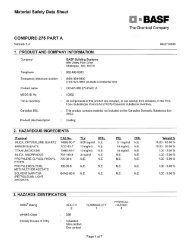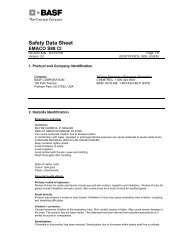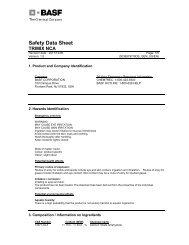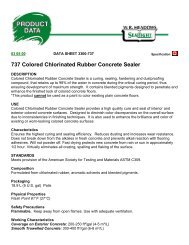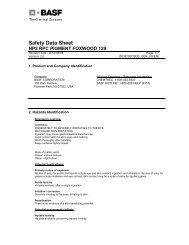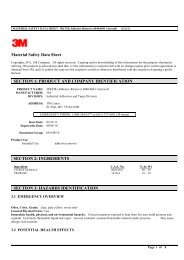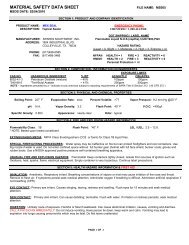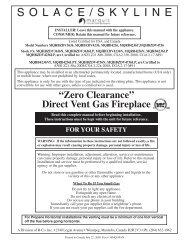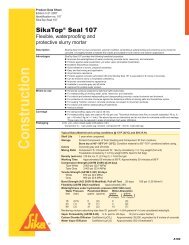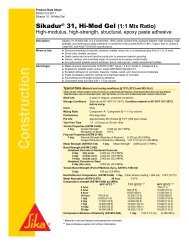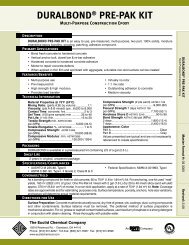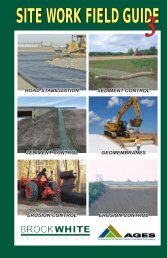Create successful ePaper yourself
Turn your PDF publications into a flip-book with our unique Google optimized e-Paper software.
Bracing InformationBrace LoadingBracing recommendations shown in these instructions arefor the sole purpose of temporarily bracing fully erectedtilt-up panels against wind loads only. Dayton Superioruses the wind load provisions described in the AmericanSociety of Civil Engineers (ASCE) Minimum Design Loadsfor Building and Other Structures and the Tilt-Up ConcreteAssociation Guideline for Temporary Wind Bracing todetermine the wind loads that are applied to an erectedtilt-up panel.The ASCE 7-02 standard specifies a basic wind speedof 90 mph for most areas of the United States. This 90mph basic wind speed is based on a fifty-year meanrecurrence interval for a three second peak gust speed atthirty-three feet above ground level.However, the ASCE standard allows and the Tilt-Up Associationrecommends, that the 90 mph basic wind speedbe multiplied by a factor of 0.80 for a five year recurrenceinterval. This allows the use of a construction period designwind speed of 72 mph in calculating brace loads formost areas of the United States.For areas of the country having a basic wind speed differentthan 90 mph, the following construction period wind speed willbe used for the design of the temporary bracing.Basic Wind Speed Construction PeriodWind Speed90 mph 72 mph minimum100 mph 80 mph minimum140 mph 112 mph150 mph 120 mphParts of the United states that are in the Special WindRegions shown on the ASCE Basic Wind Speed map willrequire a higher construction period design wind speed thannormal. The construction period design wind speed usedin the design of the bracing for this project is shown in thelower left hand corner of each panel layout sheet. If the localbuilding code requires a higher construction period designwind speed, DO NOT erect any panels before contactinga Dayton Superior Technical Service Center for additionalbracing recommendations.Bracing InformationWARNINGIf wind loads of 35 mph occur, an inspection of allbrace connections should be made. Loose connectionscan cause panels to fall. If local codesrequire a higher construction period design windspeed, contact Dayton Superior for additional bracingrecommendations.Location V mph V m/sHawaii 105 47Puerto Rico 145 65Alaska varies varies04-0973



